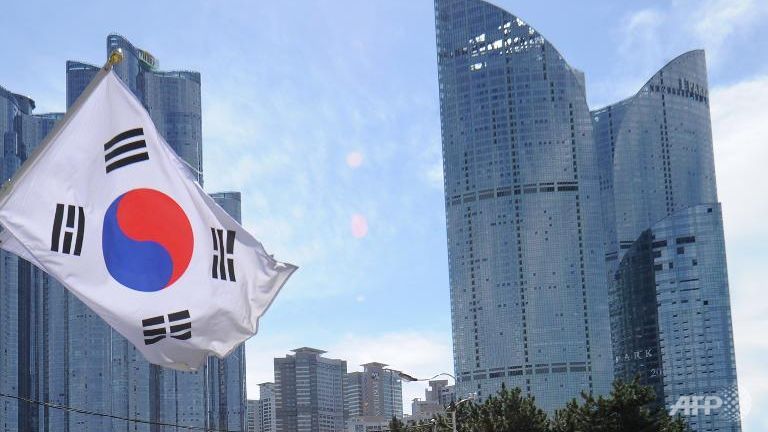The Political System of South Korea: An In-Depth Analysis
The Republic of Korea, commonly known as South Korea, has a dynamic political system that reflects its unique historical context, socio-economic development, and cultural identity. This article aims to explore the intricacies of South Korea’s political system, including its governance structure, electoral process, major political parties, and the role of civil society.
Historical Context
To understand the current political system, it is crucial to acknowledge the historical backdrop. After the end of Japanese colonial rule in 1945, Korea was divided into two distinct states: North Korea and South Korea. South Korea adopted a democratic system, heavily influenced by the United States, while North Korea established a communist regime. The Korean War (1950-1953) further entrenched this division and shaped the political landscape of South Korea. The subsequent decades saw South Korea oscillate between authoritarian rule and democratic governance, culminating in the establishment of a stable democratic system in the late 20th century.
Governance Structure
South Korea operates under a presidential system defined by the Constitution of 1948, which has undergone several amendments. The government is divided into three branches: the executive, legislative, and judiciary.
- Executive Branch
The President of South Korea serves as both the head of state and government. The President is elected for a single five-year term, with no possibility of re-election. This limitation is a response to the historical precedents of authoritarian rulers extending their tenure. The President has substantial powers, including appointing the Prime Minister (with legislative approval), overseeing the armed forces, and directing foreign policy. The Cabinet, comprising appointed ministers, assists the President in governance. - Legislative Branch
The National Assembly is the unicameral legislature of South Korea, consisting of 300 members. Members serve four-year terms, with 253 elected from single-member districts and 47 from proportional representation. The National Assembly wields significant power, including the ability to legislate, ratify treaties, and impeach the President. The assembly’s operations reflect a multi-party system, allowing various political parties to influence legislative outcomes. - Judicial Branch
The judiciary in South Korea operates independently, with the Constitutional Court serving as the highest authority in constitutional matters. The Supreme Court, the highest court in the judicial system, oversees the interpretation of laws and ensures justice. The judiciary’s independence is crucial in safeguarding democratic principles and human rights.
Electoral Process
Elections in South Korea are a cornerstone of its democratic system. The country conducts regular elections at national, local, and municipal levels, ensuring political accountability and public participation.
- Presidential Elections
Presidential elections occur every five years, and candidates are typically nominated by political parties. The election process involves a secret ballot, and the candidate receiving a majority of votes is declared the winner. If no candidate secures a majority, a runoff election is held. - Legislative Elections
Legislative elections are held every four years. Voters elect members of the National Assembly through a mixed electoral system that combines first-past-the-post and proportional representation. This system encourages diverse political representation and fosters the emergence of multiple political parties. - Local Elections
Local elections in South Korea allow citizens to vote for governors, mayors, and local council members. These elections occur every four years, enhancing local governance and community representation.
Major Political Parties
South Korea’s political landscape is characterized by a multi-party system, with several significant political parties vying for power. Two of the most prominent parties are:
- The Democratic Party of Korea (DPK)
Founded in 2014, the DPK is a center-left political party that emphasizes social justice, economic equality, and progressive reforms. The party has enjoyed significant electoral success in recent years, securing the presidency and a majority in the National Assembly. - The People Power Party (PPP)
The PPP, a center-right political party, is the main opposition to the DPK. The party advocates for free-market policies, conservative social values, and a robust national defense. The PPP has a significant voter base, particularly among those who favor a more traditional approach to governance.
In addition to these two major parties, there are several smaller parties, each representing various political ideologies, regional interests, or specific social issues. This pluralism contributes to the vibrant political discourse in South Korea.
Role of Civil Society
Civil society plays an essential role in South Korea’s political system. The country has a robust tradition of civic engagement, with numerous non-governmental organizations (NGOs), labor unions, and grassroots movements advocating for various social causes. The pro-democracy movements of the 1980s, which culminated in the democratization of South Korea, exemplify the power of civil society in influencing political change.
Public protests and demonstrations are commonplace, reflecting the active participation of citizens in the democratic process. Issues such as labor rights, environmental protection, and social justice often mobilize significant public support, leading to policy changes and reforms.
Conclusion
The political system of South Korea is a complex interplay of historical evolution, institutional frameworks, and active civil society engagement. As a mature democracy, South Korea continues to navigate challenges such as political polarization, economic inequality, and regional tensions. The resilience of its democratic institutions, coupled with a vigilant and engaged citizenry, provides a foundation for addressing these challenges and promoting a stable and prosperous future.
Through ongoing reforms, participatory governance, and civic engagement, South Korea exemplifies the dynamic nature of democratic politics in the 21st century. As the nation looks forward, the continued evolution of its political landscape will play a crucial role in shaping not only its domestic trajectory but also its position on the global stage.
References
- Kim, J. (2018). The Political Economy of South Korea: The State, Capital and Society. London: Routledge.
- Lee, S. (2020). Democracy and Democratization in South Korea: The Role of Civil Society. Asian Journal of Comparative Politics, 6(1), 3-22.
- Shin, D. C. (2021). Elections and Democracy in South Korea. Electoral Studies, 70, 102-110.
- Park, C. (2019). Understanding South Korea’s Political Parties: A Comparative Perspective. Korean Journal of Political Science, 27(2), 45-66.
